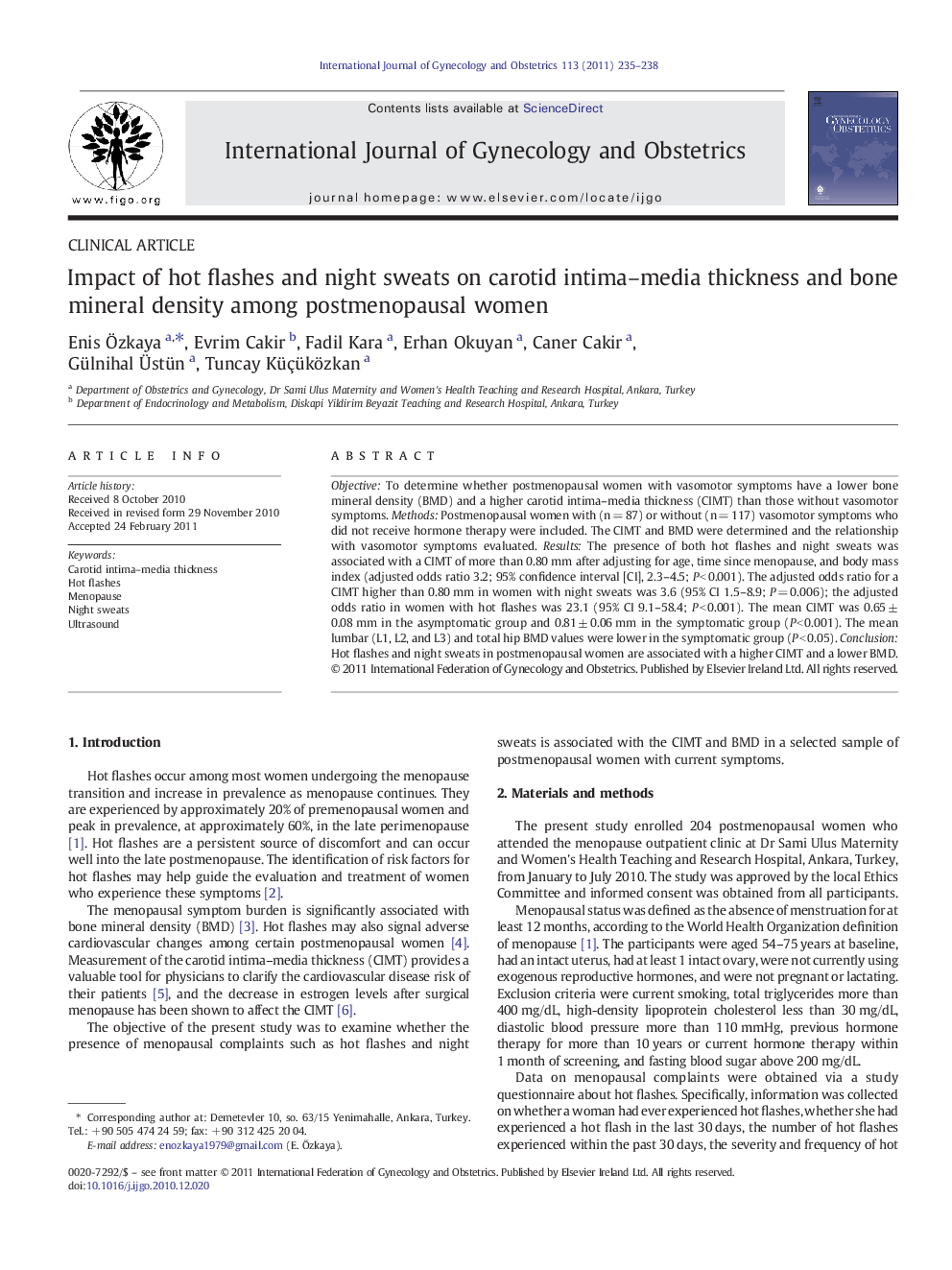| Article ID | Journal | Published Year | Pages | File Type |
|---|---|---|---|---|
| 3953615 | International Journal of Gynecology & Obstetrics | 2011 | 4 Pages |
ObjectiveTo determine whether postmenopausal women with vasomotor symptoms have a lower bone mineral density (BMD) and a higher carotid intima–media thickness (CIMT) than those without vasomotor symptoms.MethodsPostmenopausal women with (n = 87) or without (n = 117) vasomotor symptoms who did not receive hormone therapy were included. The CIMT and BMD were determined and the relationship with vasomotor symptoms evaluated.ResultsThe presence of both hot flashes and night sweats was associated with a CIMT of more than 0.80 mm after adjusting for age, time since menopause, and body mass index (adjusted odds ratio 3.2; 95% confidence interval [CI], 2.3–4.5; P < 0.001). The adjusted odds ratio for a CIMT higher than 0.80 mm in women with night sweats was 3.6 (95% CI 1.5–8.9; P = 0.006); the adjusted odds ratio in women with hot flashes was 23.1 (95% CI 9.1–58.4; P < 0.001). The mean CIMT was 0.65 ± 0.08 mm in the asymptomatic group and 0.81 ± 0.06 mm in the symptomatic group (P < 0.001). The mean lumbar (L1, L2, and L3) and total hip BMD values were lower in the symptomatic group (P < 0.05).ConclusionHot flashes and night sweats in postmenopausal women are associated with a higher CIMT and a lower BMD.
